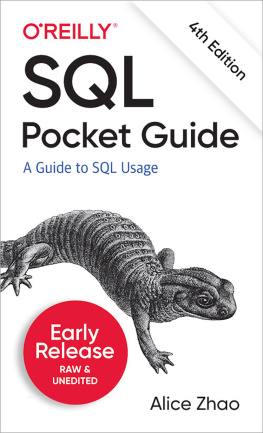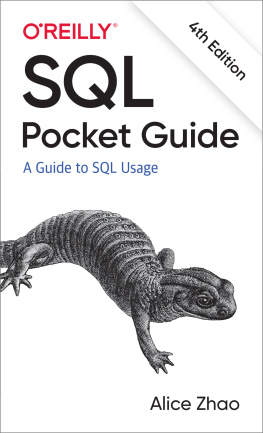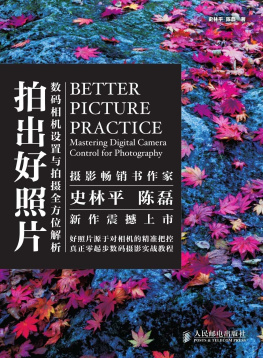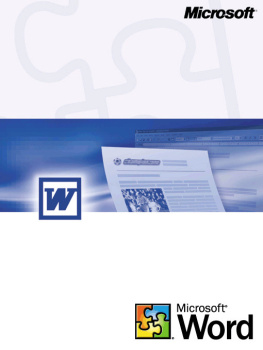Alice Zhao - SQL Pocket Guide, 4th Edition
Here you can read online Alice Zhao - SQL Pocket Guide, 4th Edition full text of the book (entire story) in english for free. Download pdf and epub, get meaning, cover and reviews about this ebook. year: 2021, publisher: OReilly Media, Inc., genre: Computer. Description of the work, (preface) as well as reviews are available. Best literature library LitArk.com created for fans of good reading and offers a wide selection of genres:
Romance novel
Science fiction
Adventure
Detective
Science
History
Home and family
Prose
Art
Politics
Computer
Non-fiction
Religion
Business
Children
Humor
Choose a favorite category and find really read worthwhile books. Enjoy immersion in the world of imagination, feel the emotions of the characters or learn something new for yourself, make an fascinating discovery.
- Book:SQL Pocket Guide, 4th Edition
- Author:
- Publisher:OReilly Media, Inc.
- Genre:
- Year:2021
- Rating:4 / 5
- Favourites:Add to favourites
- Your mark:
- 80
- 1
- 2
- 3
- 4
- 5
SQL Pocket Guide, 4th Edition: summary, description and annotation
We offer to read an annotation, description, summary or preface (depends on what the author of the book "SQL Pocket Guide, 4th Edition" wrote himself). If you haven't found the necessary information about the book — write in the comments, we will try to find it.
SQL Pocket Guide, 4th Edition — read online for free the complete book (whole text) full work
Below is the text of the book, divided by pages. System saving the place of the last page read, allows you to conveniently read the book "SQL Pocket Guide, 4th Edition" online for free, without having to search again every time where you left off. Put a bookmark, and you can go to the page where you finished reading at any time.
Font size:
Interval:
Bookmark:

by Alice Zhao
Copyright 2021 OReilly Media. All rights reserved.
Printed in the United States of America.
Published by OReilly Media, Inc. , 1005 Gravenstein Highway North, Sebastopol, CA 95472.
OReilly books may be purchased for educational, business, or sales promotional use. Online editions are also available for most titles ( http://oreilly.com ). For more information, contact our corporate/institutional sales department: 800-998-9938 or corporate@oreilly.com .
- Editors: Amelia Blevins and Andy Kwan
- Production Editor: FILL IN PRODUCTION EDITOR
- Copyeditor: FILL IN COPYEDITOR
- Proofreader: FILL IN PROOFREADER
- Indexer: FILL IN INDEXER
- Interior Designer: David Futato
- Cover Designer: Karen Montgomery
- Illustrator: Rebecca Demarest
- December 2021: Fourth Edition
- 2020-11-10: First Early Release
- 2021-01-26: Second Early Release
See http://oreilly.com/catalog/errata.csp?isbn=9781492090403 for release details.
The OReilly logo is a registered trademark of OReilly Media, Inc. SQL Pocket Guide, the cover image, and related trade dress are trademarks of OReilly Media, Inc.
The views expressed in this work are those of the author(s), and do not represent the publishers views. While the publisher and the author(s) have used good faith efforts to ensure that the information and instructions contained in this work are accurate, the publisher and the author(s) disclaim all responsibility for errors or omissions, including without limitation responsibility for damages resulting from the use of or reliance on this work. Use of the information and instructions contained in this work is at your own risk. If any code samples or other technology this work contains or describes is subject to open source licenses or the intellectual property rights of others, it is your responsibility to ensure that your use thereof complies with such licenses and/or rights.
978-1-492-09040-3
[FILL IN]
Since the last edition of the SQL Pocket Guide was published, a lot has changed in the data world. The amount of data generated and collected has exploded, and a number of tools and jobs have been created to handle the influx of data. Through all of the changes, SQL has remained an integral part of the data landscape.
Over the past 15 years, I have worked as an engineer, consultant, analyst and data scientist, and I have used SQL in every one of my roles. Even if my main responsibilities were focused on another tool or skill, I had to know in SQL in order to access data at a company.
If there was a programming language award for best supporting actor, SQL would take home the prize.
As new technologies emerge, SQL is still top of mind when it comes to working with data. Cloud-based storage solutions like Amazon Redshift and Google BigQuery require users to write SQL queries to pull data. Distributed data processing frameworks like Hadoop and Spark have sidekicks Hive and Spark SQL, respectively, which provide SQL-like interfaces for users to analyze data.
SQL has been around for almost five decades, and it is not going away anytime soon. It is one of the oldest programming languages still being used widely today and Im excited to share the latest and greatest with you in this book.
There are many existing SQL books out there ranging from ones that teach beginners how to code in SQL to detailed technical specifications for database administrators. This book is not intended to cover all SQL concepts in depth, but rather to be a simple reference for when:
Youve forgotten some SQL syntax and need to look it up quickly
Youve come across a slightly different set of database tools at a new job and need to look up the nuanced differences
Youve been focusing on another coding language for a while and need a quick refresher on how SQL works again
If SQL plays a large supporting role in your job, then this is the perfect pocket guide for you.
The third edition of the SQL Pocket Guide by Jonathan Gennick was published in 2010, and it was well-received by readers. Ive made the following updates to the fourth edition.
The syntax has been updated for MySQL, PostgreSQL, Microsoft SQL Server and Oracle. IBMs DB2 has been removed due to its decrease in popularity and SQLite has been added due to its increase in popularity.
The third edition of the book was organized alphabetically. I rearranged the sections in the fourth edition so that similar concepts are grouped together. There is still an index at the end of the book that lists concepts alphabetically.
Due to the number of data analysts and data scientists who are now using SQL in their jobs, I added sections on how to use SQL with Python and R (popular open source programming languages), as well as an SQL crash course for those who need a quick refresher.
The last section of the book is called How Do I ? and it includes frequently asked questions by SQL newbies or those who havent used SQL in a while.
My recommendation would be to start there if dont remember the exact keyword or concept that youre looking for. Example questions include:
How do I check if there are duplicate values in a table?
How do I select the top n rows of each group in a group by?
How do I turn rows of data into columns of data?
Lets start with the basics. A database is a place to store data in an organized way. There are many ways to organize data, and as a result, there are many databases to choose from. The two categories that databases fall into are SQL and NoSQL.
SQL is short for Structured Query Language. Imagine you have an app that remembers all of your friends birthdays. SQL is the most popular language you would use to talk to the app.
English: Hey app. When is my husbands birthday?
SQL:SELECT * FROM birthdays WHERE person = 'husband';
SQL databases are often called relational databases because they are made up of relations, which are more commonly referred to as tables. Many tables connected to each other make up a database. Figure 1-1 shows a picture of a relation in an SQL database.
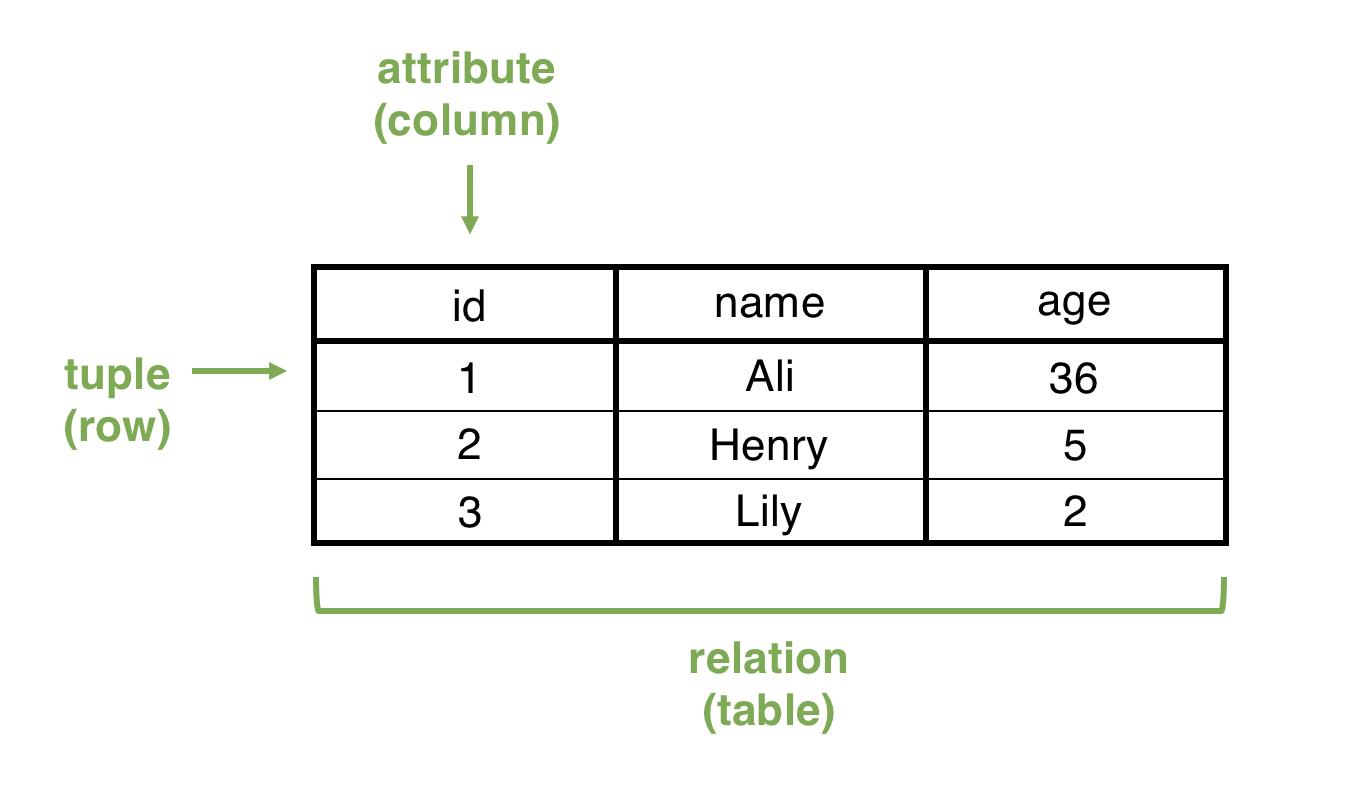
The main thing to note about SQL databases is that they require predefined schemas. You can think of a schema as the way that data in a database is organized or structured. Lets say youd like to create a table. Before loading any data into the table, the structure of the table must first be decided on, including things like what columns are in the table, whether those columns hold integer or decimal values, etc.
There comes a time though, when data cannot be organized in such a structured way. Your data may have varying fields or need to be spread across multiple machines. Thats where NoSQL comes in.
Font size:
Interval:
Bookmark:
Similar books «SQL Pocket Guide, 4th Edition»
Look at similar books to SQL Pocket Guide, 4th Edition. We have selected literature similar in name and meaning in the hope of providing readers with more options to find new, interesting, not yet read works.
Discussion, reviews of the book SQL Pocket Guide, 4th Edition and just readers' own opinions. Leave your comments, write what you think about the work, its meaning or the main characters. Specify what exactly you liked and what you didn't like, and why you think so.

